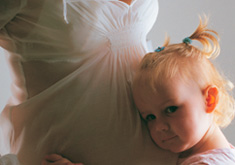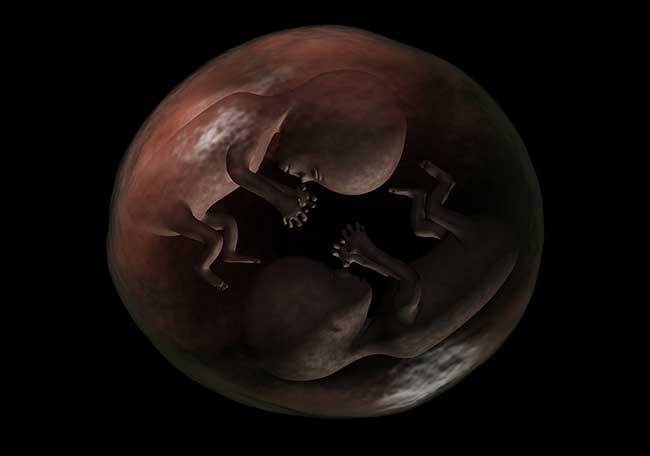Resultados ante polihidramnios con ecografía normal

1. Moore TR, Cayle JE. The amniotic fluid index in normal human pregnancy. Am J Obstet Gynecol. 1990; 162(5):1168–1173
2. Dorleijn DM, Cohen-Overbeek TE, Groenendaal F, Bruinse HW, Stoutenbeek P. Idiopathic polyhydramnios and postnatal findings. J Matern Fetal Neonatal Med. 2009; 22(4):315–320
3. Magann EF, Chauhan SP, Doherty DA, Lutgendorf MA, Magann MI, Morrison JC. A review of idiopathic hydramnios and pregnancy outcomes. Obstet Gynecol Surv. 2007; 62(12):795–802
4. Sandlin AT, Chauhan SP, Magann EF. Clinical relevance of sonographically estimated amniotic fluid volume: polyhydramnios. J Ultrasound Med. 2013; 32(5):851–863
5. Barkin SZ, Pretorius DH, Beckett MK, Manchester DK, Nelson TR, Manco-Johnson ML. Severe polyhydramnios: incidence of anomalies. AJR Am J Roentgenol. 1987; 148(1):155–159
6. Pauer HU, Viereck V, Krauss V, Osmers R, Krauss T. Incidence of fetal malformations in pregnancies complicated by oligo- and polyhydramnios. Arch Gynecol Obstet. 2003; 268(1):52–56
7.Glantz JC, Abramowicz JS, Sherer DM. Significance of idiopathic mid trimester polyhydramnios. Am J Perinatol. 1994; 11(4):305–308
8. Moise KJ Jr. Polyhydramnios. Clin Obstet Gynecol. 1997; 40(2):266–279
9. Taskin S, Pabuccu EG, Kanmaz AG, Kahraman K, Kurtay G. Perinatal outcomes of idiopathic
polyhydramnios. Interv Med Appl Sci. 2013; 5(1):21–25
10. Panting-Kemp A, Nguyen T, Chang E, Quillen E, Castro L. Idiopathic polyhydramnios and perinatal outcome. Am J Obstet Gynecol. 1999; 181(5 pt 1):1079–1082
11. Chen KC, Liou JD, Hung TH, et al. Perinatal outcomes of polyhydramnios without associated congenital fetal anomalies after the gestational age of 20 weeks. Chang Gung Med J. 2005; 28(4):222–228
12. Thompson O, Brown R, Gunnarson G, Harrington K. Prevalence of polyhydramnios in the third trimester in a population screened by first and second trimester ultrasonography. J Perinat Med. 1998; 26(5):371–377
13. American Institute of Ultrasound in Medicine. AIUM practice guideline for the performance
of obstetric ultrasound examinations. J Ultrasound Med. 2013; 32(6):1083–1101
14. Hansen M, Kurinczuk JJ, Milne E, de Klerk N, Bower C. Assisted reproductive technology and birth defects: a systematic review and meta-analysis. Hum Reprod Update. 2013; 19(4):330–353
15. Dollberg S, Haklai Z, Mimouni FB, Gorfein I, Gordon ES. Birth weight standards in the live-born population in Israel. Isr Med Assoc J. 2005; 7(5):311–314
16. Davies MJ, Moore VM, Willson KJ, et al. Reproductive technologies and the risk of birth defects. N Engl J Med. 2012; 366(19):1803–1813
17. Harlev A, Sheiner E, Friger M, Hershkovitz R. Polyhydramnios and adverse perinatal outcome: what is the actual cutoff? J Matern Fetal Neonatal Med. 2014; 27(12):1199–1203
18. Biggio JR Jr, Wenstrom KD, Dubard MB, Cliver SP. Hydramnios prediction of adverse perinatal outcome. Obstet Gynecol. 1999; 94(5 pt 1): 773–777
19. Magann EF, Doherty DA, Lutgendorf MA, Magann MI, Chauhan SP, Morrison JC. Peripartum outcomes of high-risk pregnancies complicated by oligo and polyhydramnios: a prospective longitudinal study. J Obstet Gynaecol Res. 2010; 36(2):268–277
20. Golan A, Wolman I, Sagi J, Yovel I, David MP. Persistence of polyhydramnios during pregnancy: its significance and correlation with maternal and fetal complications. Gynecol Obstet Invest. 1994; 37(1):18–20
21. Chauhan SP, Martin RW, Morrison JC. Intrapartum hydramnios at term and perinatal outcome. J Perinatol. 1993; 13(3):186–189
22. Mazouni C, Rouzier R, Collette E, et al. Development and validation of a nomogram to predict the risk of cesarean delivery in macrosomia. Acta Obstet Gynecol Scand. 2008; 87(5):518–523
23. Stotland NE, Hopkins LM, Caughey AB. Gestational weight gain, macrosomia, and risk of cesarean birth in non diabetic nulliparas. Obstet Gynecol. 2004; 104(4):671–677
24. Peleg D, Warsof S, Wolf MF, Perlitz Y, Shachar IB. Counseling for fetal macrosomia: an estimated fetal weight of 4,000 g is excessively low. Am J Perinatol. 2014; 32(1): 71–74
25. Parry S, Severs CP, Sehdev HM, Macones GA, White LM, Morgan MA. Ultrasonographic prediction of fetal macrosomia. Association with cesarean delivery. J Reprod Med. 2000; 45(1):17–22
26. Anthony S, Buitendijk SE, Dorrepaal CA, Lindner K, Braat DD, den Ouden AL. Congenital malformations in 4224 children conceived after IVF. Hum Reprod. 2002; 17(8):2089–2095
27. Fujii M, Matsuoka R, Bergel E, van der Poel S, Okai T. Perinatal risk in singleton pregnancies after in vitro fertilization. Fertil Steril. 2010; 94(6):2113–2117
28. Dashe JS, McIntire DD, Ramus RM, Santos-Ramos R, Twickler DM. Hydramnios: anomaly prevalence and sonographic detection. Obstet Gynecol. 2002; 100(1):134–139
29. Rodríguez-Soriano J. Bartter and related syndromes: the puzzle is almost solved. Pediatr Nephrol. 1998; 12(4):315–327
Comentarios
Para ver los comentarios de sus colegas o para expresar su opinión debe ingresar con su cuenta de IntraMed.









